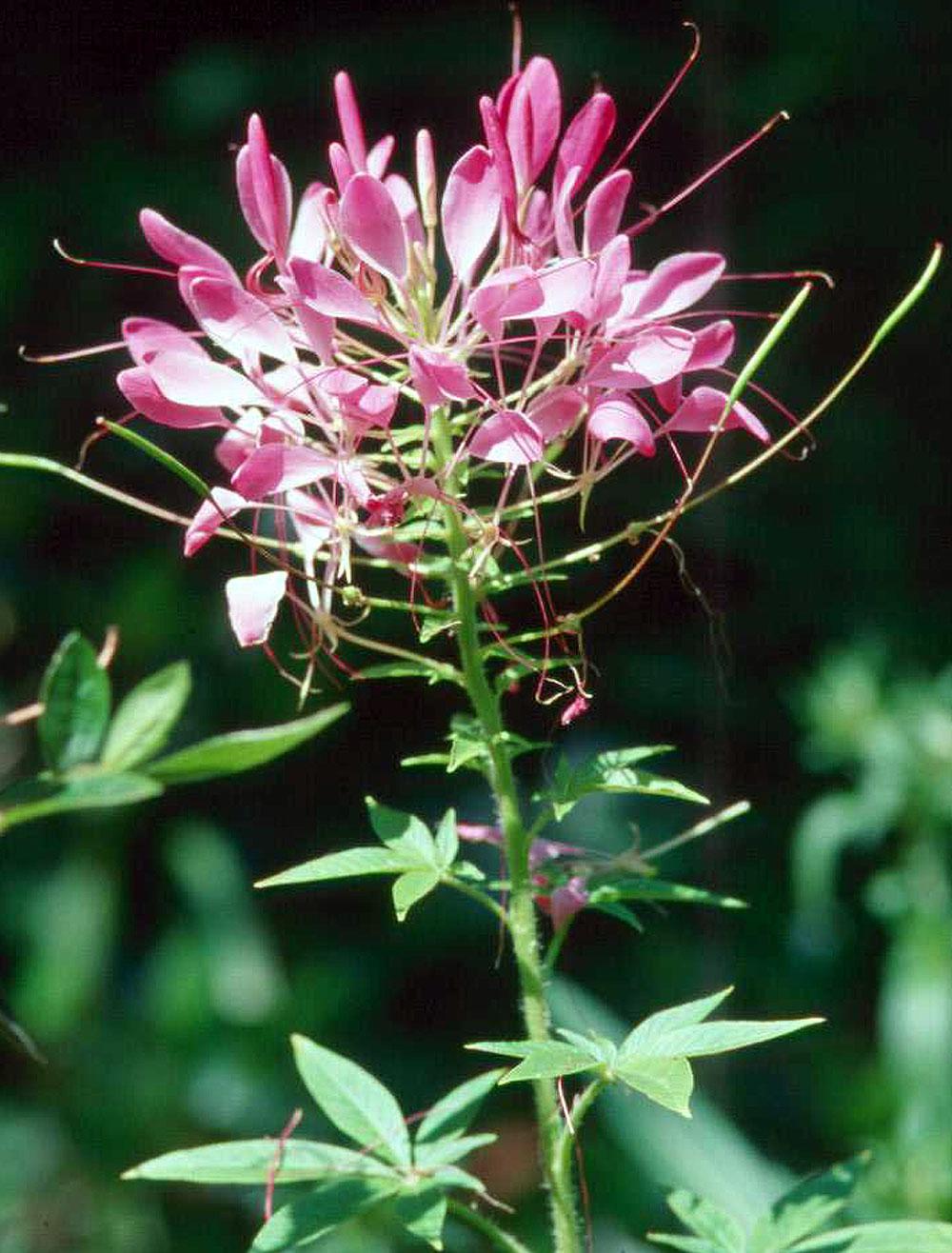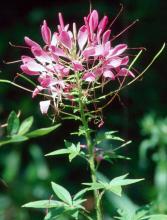Information Possibly Outdated
The information presented on this page was originally released on June 25, 2001. It may not be outdated, but please search our site for more current information. If you plan to quote or reference this information in a publication, please check with the Extension specialist or author before proceeding.
Cleome has bright prospects in state
By Norman Winter
MSU Horticulturist
Central Mississippi Research & Extension Center
The future is looking bright for the cleome, one of the old time favorites in the Southern cottage garden. Unbelievably, there are new varieties of cleome poised to make their debut.
Cleome, sometimes called spider flower or spider plant, is native to several South American countries. Botanically speaking, it is known as Cleome hassleriana and is in the caper family. The capers we eat are known as Capparis.
Linde Armstrong is an Athen's Select plant out of the University of Georgia now being marketed nationally by EuroAmerican Propagators in Bonsall, Calif. This is a very compact, thornless cleome with pink flowers and outstanding heat tolerance.
Goldsmith Seeds in Gilroy, Calif., (wholesale only) is introducing a new series called Sparkler, the first F1 hybrid series of cleome. Sparkler plants are unique in that they are full and bushy, reaching a height of 3 to 4 feet.
To prove how good the Sparkler series is and how rare it is to have new cleomes, guess what will be an All-American Winner in 2002? You're right if you said the Sparkler Blush, which is pink and white. The other colors in the series are lavender, rose and white.
Don't be frustrated that you won't find these until next year. Right now you can shop for the Queen Series that is one of the best cleomes. The Queen series captured the lion's share of the market the past few years with violet, rose, cherry and a white known as Helen Campbell.
If you haven't grown cleome, you will fall in love with its tall, spider-like flowers that lend a unique look to the garden with their long stamens that border on the spectacular. They are excellent for cut flowers and give a perennial-like performance by re-seeding prolifically. The flowers are a favorite for hummingbirds.
Cleome can be planted from young transplants or direct seeded in warm spring soil. Plant in well-drained beds in full sun. Morning sun and afternoon shade also will work well. If the bed is poorly drained, add 2 to 3 inches of organic matter. These are large plants, so pay attention to spacing transplants and thinning seedlings.
Place plants to the rear of the border in a bold group. One of the prettiest displays is to plant violet salvia in front of violet Queen cleome with similarly colored, two-toned petunias in front.
Sonata cosmos, purple coneflowers and groundcover roses like Baby Blanket work well with cleome. Cleomes look good in a cottage-style garden against a white picket fence. With their bright colors and long protruding stamens, they also fit the tropical garden.
Cleomes are drought tolerant, and keeping them on the dry side will help keep them in bounds. Prune them back before bloom to improve branching and lightly apply a 5-10-5 fertilizer in mid-summer.
Saying the cleome re-seeds prolifically is an understatement as there are 14,000 cleome seeds in an ounce! If this bothers you, remove seedpods as they form. Though drought tolerant, they do appreciate a good layer of mulch.



